The Exhibition of the Yokohama Museum of Art: Collection 2016 Part 2
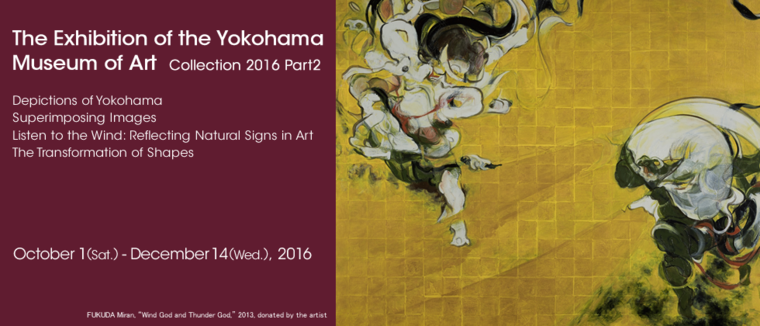
FUKUDA Miran, "Wind God and Thunder God" 2013, donated by the artist
Overview
Depictions of Yokohama
Superimposing Images
Listen to the Wind: Reflecting Natural Signs in Art
The Transformation of Shapes
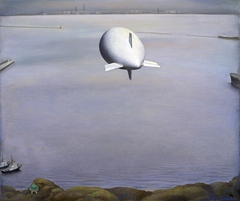
KOKURYŌ Tsunero,
”Harbor View with Flying Zeppelin,” 1993 donated by the artist
The first, “Depictions of Yokohama,” was overseen by the museum’s Education Project team. The display focuses on many different aspects of the city of Yokohama, including the high-rise buildings in the Minato Mirai 21 district, which is also home to the museum. The artists, representing a wide range of generations, depicted the Yokohama landscape using a variety of viewpoints and techniques. The works include some places that have undergone drastic changes, and others that are striking vestiges of the past. Some viewers may view these scenes with nostalgia, as the works overlap with personal memories and reminiscences. During the exhibition, we are also offering a special program in which volunteers escort viewers to the places depicted in the works.

FUKUDA Miran,
"Wind God and Thunder God," 2013 donated by the artist
In the center of the third section, “Listen to the Wind: Reflecting Natural Signs in Art,” is Kumai Kyōko’s three-dimensional work "Thick Growth ’99." To create a resonance with Kumai’s work, the display also features paintings that make use of natural motifs.
The final section, “The Transformation of Shapes,” is located in the photography gallery. It presents Dada and Surrealist photographs from the early 20th century that employ experimental techniques to change ordinary things into extraordinary images as well as photographic self-portraits by Lucas Samaras and Morimura Yasumasa, who transform their bodies into various forms.
List of works [1870KB]
Sections
Depictions of Yokohama
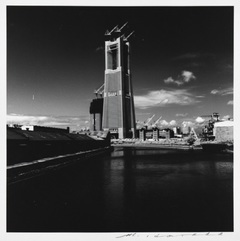
HARADA Masamichi,
”From the Series 'Yokohama'" 1986-98
(2) Port Scenes: Kaigan-dōri and Yamashita Park
(3) Hilltop Views: Honmoku and Yamate
(4) Scenes of Twilight: Ishiwata Kōitsu’s Gaze
With shade provided by zelkova trees and a fountain, Grand Mall Park, located directly in front of the Yokohama Museum of Art, is a popular rest area for office workers during the week and families on weekends. This section, divided into four themes, focuses on works that depict the Yokohama area. The museum (opened in 1989), located in the center of Minato Mirai 21, has seen the passage of time along this new area. This exhibit begins with works focusing on this area, home to towering buildings like the InterContinental Yokohama Grand Hotel (1991) and Yokohama Landmark Tower (1993).
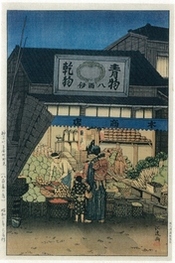
ISHIWATA Kōitsu,
"View of Koyasu-machi, Kanagawa (Greengrocer’s Shop)" 1931
Painters and photographers have captured the city’s landscape and people throughout history, and turned the results into works of art. We hope that you will enjoy looking at these works as you recall your own memories of Yokohama.
Superimposing Images

René MAGRITTE,
"Le Musée du roi" 1966
ⓒADAGP, Paris & JASPAR, Tokyo, 2016 C1167
(2) Landscapes
(3) Traditional Iconography
(4) Circles
When the state and appearance of a work suddenly catch our eye, do we only see the surface? Every work of art is woven out of multiple layers made up of the things that the artist thought, attempted, and wanted to convey. The atmosphere of the era in which the artist was active, their ethnicity, nationality, and cultural history also frequently seep out from the depths of the work. When we the viewers add our own memories and feelings, the fertile juxtapositions contained in the work sparkle vividly, becoming something real that communicates with us in the present.
This section, based on the keywords “superimposing” and “superimposed,” is divided into four themes. The first theme, “Faces,” focuses on two series of portrait prints made by adding and subtracting images. In the second, “Landscapes,” we introduce some paintings in which human forms are juxtaposed with landscapes to create a kind of ”trompe l'œil” effect, and also some contemporary works in which multiple photographs are superimposed on a map. Then, by broadly interpreting the word “superimposed,” in the third theme, “Traditional Iconography,” we examine how various subjects and masterpieces from art history have been reused over the years. This leads us to the final theme of “Circles,” in which we focus on the “shape” of various ideas and symbols that have been juxtaposed in civilization.
Listen to the Wind: Reflecting Natural Signs in Art
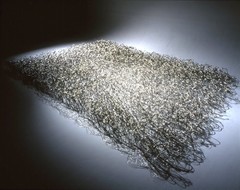
KUMAI Kyōko, "Thick Growth '99," 1999 donated by the artist
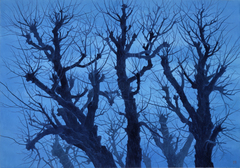
HIGASHIYAMA Kaii,
"Trees" 1984
donated by the artist
The Transformation of Shapes
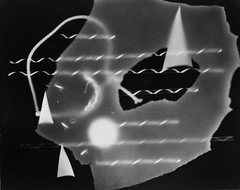
László MOHOLY-NAGI,
"Photogram with Drinking Straw" 1939
(2) Distortion and Solarization
(3) Physical Metamorphosis and Transformation
(4) Alexandre Alexeïeff: "Night on Bald Mountain"
Some 180 years have passed since the birth of photography, which has now become an indispensable part of our lives. Easily integrated with printed matter or electronic media, photography’s ability to record and transmit a subject or event has exerted tremendous influence on us. It is also an outstanding medium of expression. Photographers and artists active in a variety of eras and regions, have demonstrated their creativity and artistry, and continually developed new types of photography that defy conventional wisdom.
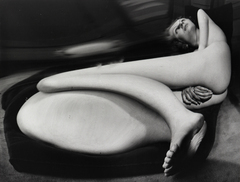
André KERTÉSZ, "Distortion No.40, Paris," 1933
In the last display in the gallery, we present the animator Alexandre Alexeïeff’s work “Night on Bald Mountain (Une Nuit sur le Mont Chauve),” produced with a pinscreen. Enjoy this fantastic world set to Mussorgsky’s symphonic poem of the same name.
Outline
| Dates | October 1 (Sat.)-December 14 (Wed.), 2016 |
|---|---|
| Closed | Thursdays (Except November 3), November 4 (Fri.), 2016 |
| Open Hours | 10:00-18:00 (Last admission at 17:30) *Open until 20:30 on October 28, 2016 (Last admission at 20:00) |
| Organizer | Yokohama Museum of Art |
Ticket
| Adults | 500(400) |
|---|---|
| University students
High school students | 300(240) |
| Junior high school students | 100(80) |
| Children under 12 | Free |
*( )= Group of 20 or more (pre-booking required)
*Free Admission on November 3, 2016.
*Free Admission for high school and younger student with valid ID on every Saturday.
*Visitors with disability and one person accompanying them are admitted free of charge.
(Please present a certificate at the entrance.)
*Collection gallery is available with a ticket of Special Exhibition.









